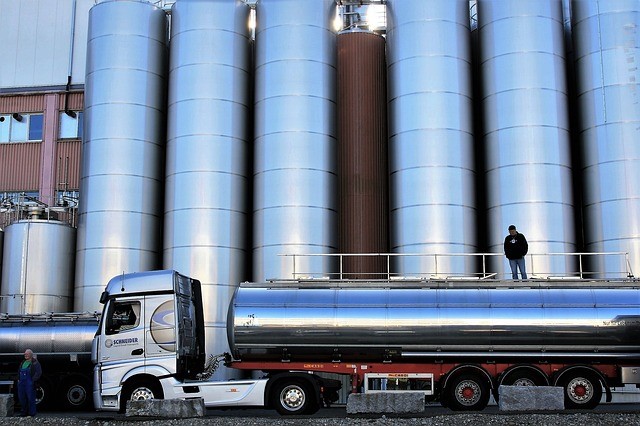
A unique aspect of the dairy industry is that there is a significant difference in the way in which the milk and milk products are moved across different legs. Collecting milk from the farmer and transporting it to the chillers is very different from the way in which the distribution of milk takes place in town. The procurement and distribution legs use different modes of transportation, like tankers, refrigerated trucks, two or three-wheeled vehicles, and insulated trucks. Since milk comes in the perishable food segment, it is important to ensure that its movement takes place efficiently.
In the dairy supply chain, the tanker is a vital component for transporting the milk from the farmer to the dairy plant. Tanker planning is a crucial process in the procurement of milk. It is only through efficient tanker planning that the milk reaches the end customers in a safe and timely manner. Tanker planning focuses on three different aspects. These are –
- - Tanker compartment optimization
- - Tanker route optimization
- - Distance and time optimization
In this article, we will explore each of these aspects to determine how we can optimize the tanker planning to execute efficient milk procurement.
Key elements of efficient tanker planning
1. Tanker compartment optimization
The milk tankers are designed to carry different qualities and types of milk. They usually have different compartments for carrying these different milk varieties. This is done to ensure that different types of milk, like cow milk and buffalo milk, are not mixed inside the tanker during transportation. Tanker planning algorithms can help in the process of compartment optimization by dynamically deciding which quality/type of milk has to be loaded in different tanker compartments.
Tanker optimization also covers the following things –
- - Proper grading of milk.
- - Ensuring that the attachments and fittings of the tanker are sanitized and clean to ensure milk quality.
- - The fittings, pipes, attachments, and milk pump should be assembled and secured properly to prevent contamination of milk.
- - Ensuring that the tanker keeps the milk samples cool to prevent spoilage.
- - Ensuring that the milk is collected in the tanker hygienically.
By efficient tanker planning, you will be able to ensure better utilization of compartments and also better milk procurement methods.
2. Tanker route optimization
When a tanker has to carry the milk from the collection point to the chilling center or the main dairy plant, it is important to plan the route. Tanker route planning ensures that the process of milk procurement is economical and convenient. Proper tanker planning takes into account the road access, milk availability, permissible length of the route, and the distance between the collection point and that dairy/chilling plant. An effective tanker route plan can significantly affect the milk quality, milk shed, and also the cost of procurement.
There are many factors like the weight of the vehicle, driving time, total distance, and waiting time that can play an important part in transportation costs. Vehicles that are heavier consume more fuel. In such a scenario, the traveling distance should ideally be optimized according to the truckload. It is important to analyze all these factors while planning the route.
Something that can help you in optimizing the tanker route is route planning software. This can help you in fine-tuning the whole transportation operation so that the transport and fuel costs are kept to a minimum. Through proper route optimization, you will be able to use the vehicles, drivers, and fuel more efficiently. It also helps in retaining the quality of the milk as the transportation time is cut down.
3. Distance and time optimization
Reducing the time and distance in the procurement of milk is important as it is a perishable product. The handling of milk during transportation can significantly affect its quality. The best way to prevent contamination and spoilage is by reducing the time spent on transportation. Improving vehicle utilization and generating proper schedules for the drivers can help in saving time and resources.
As a general rule, the largest tankers must be assigned to the most distant parts of the collection area and, therefore, to the first routes formed. This minimizes the number of long trips, which is important for minimizing the total collection distance. An exception would be an isolated pocket of dairy farms that could be completely collected by a small tanker. Using larger tankers in such cases would represent poor use of a scarce resource. Also, distant routes should be collected first, and the nearest ones can be left until later in the day. This minimizes the inconvenience caused by a tanker being unable to complete the planned route, either due to a breakdown or some other reason.
Conclusion
Implementing the points above will help you carry out better tanker planning, which will markedly improve your milk procurement and distribution process. If you are looking for an optimization platform to help you in milk procurement and distribution, then Mojro is the answer for you. We bring an exhaustive end-to-end offering to cater to Dairy Industry, be it for a traditional dairy firm or for the modern-day milk aggregators’ To know more, visit our website today!
Popular search:
route optimization in e-commerce,
logistics route planning software,
route optimization software,
route management,
route planner india